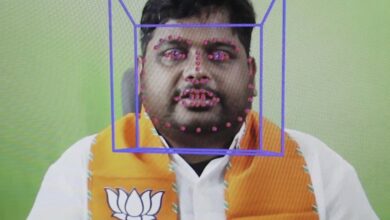Radar, Lasers, and Artificial Intelligence: Spain’s New Multi-Tool Against Drone Threats

In the ever-evolving landscape of warfare, a silent threat has become a constant companion for soldiers on the ground: unmanned aerial systems, a.k.a. drones.
These machines, once relegated to science fiction, have become a chilling reality, capable of inflicting casualties and disrupting operations.
Recognizing the human cost of this new battlefield dynamic, Spain is taking a proactive stance. Three leading defense firms—Escribano, Indra, and TRC—have recently announced a collaborative effort to develop a next-generation counter-drone system for the Spanish Armed Forces.
This initiative aims to create a shield in the skies, safeguarding soldiers’ lives and ensuring a safer operational environment.
A Tri-Company Alliance
This collaborative effort, announced earlier this month, leverages the expertise of each company.
Indra brings its proven CROW system, known for its high-precision radar and optoelectronic capabilities, that can eliminate drone threats in seconds. CROW’s lightning-fast detection and targeting have made it a valuable asset in protecting critical infrastructure and military installations.
Escribano boasts experience alongside TRC in developing the Cervus system, a counter-drone solution designed for land-based military vehicles. Cervus, unveiled last year at the International Defence and Security Fair in Madrid, provides a layered defense against drone incursions, integrating radar, electronic warfare suites, and effector capabilities.
In the ever-evolving landscape of warfare, a silent threat has become a constant companion for soldiers on the ground: unmanned aerial systems, a.k.a. drones.
These machines, once relegated to science fiction, have become a chilling reality, capable of inflicting casualties and disrupting operations.
Recognizing the human cost of this new battlefield dynamic, Spain is taking a proactive stance. Three leading defense firms—Escribano, Indra, and TRC—have recently announced a collaborative effort to develop a next-generation counter-drone system for the Spanish Armed Forces.
This initiative aims to create a shield in the skies, safeguarding soldiers’ lives and ensuring a safer operational environment.
A Tri-Company Alliance
This collaborative effort, announced earlier this month, leverages the expertise of each company.
Indra brings its proven CROW system, known for its high-precision radar and optoelectronic capabilities, that can eliminate drone threats in seconds. CROW’s lightning-fast detection and targeting have made it a valuable asset in protecting critical infrastructure and military installations.
Escribano boasts experience alongside TRC in developing the Cervus system, a counter-drone solution designed for land-based military vehicles. Cervus, unveiled last year at the International Defence and Security Fair in Madrid, provides a layered defense against drone incursions, integrating radar, electronic warfare suites, and effector capabilities.
Additionally, both Indra and Escribano collaborated on the European JEY-CUAS initiative, demonstrating their commitment to interoperable and adaptable anti-drone technology.
JEY-CUAS focuses on creating a modular “plug-and-play” architecture, allowing different nations to integrate their own counter-drone solutions seamlessly.
This combined experience positions the new Spanish system to be a powerful and adaptable shield against drone threats.
A Multi-Layered Defense
The new Spanish system promises a comprehensive approach, envisioning a layered defense shield.
Advanced radar will serve as the system’s first line of defense, detecting and tracking incoming drones at long ranges.
Optronics, likely including high-powered cameras and thermal imaging systems, will then provide positive identification and target acquisition, ensuring operators engage only legitimate threats.
Radiofrequency technology could be employed to disrupt drone control signals or jam communication channels, effectively grounding the drone or severing its link to its operator.
This multi-layered approach disrupts drone attacks at various stages, making it difficult for adversaries to bypass the system’s defenses.
The Power of AI in Counter-Drone Warfare
The real muscle behind this system lies in its command and control center.
Artificial intelligence (AI) is expected to play a crucial role in automating threat assessment, prioritizing targets, and optimizing countermeasures.
Imagine a system that can constantly analyze any incoming data, differentiate between friendly and hostile drones, and allocate resources to neutralize the most significant threats. This frees up valuable human decision-making for complex situations where AI may not have all the answers.
Additionally, AI-powered systems can continuously learn and adapt, becoming more effective over time as they encounter new drone threats.
A Toolbox of Countermeasures
Finally, the system will be equipped with a toolbox of countermeasures to neutralize or eliminate detected drones.
“Soft kill” options might involve electronic jamming or GPS spoofing to take over the drone’s control or disrupt its navigation.
For persistent threats, “hard kill” options could be available, potentially including directed energy lasers or kinetic kill missiles that destroy the drone outright.
The selection of countermeasures will depend on the specific situation and the level of threat posed by the drone.
A Look to the Future for the Spanish Armed Forces
The exact details and timeline for this project remain under wraps. However, the combined expertise of Escribano, Indra, and TRC offers a promising glimpse into the future of Spanish drone defense.
A modular and adaptable system, integrating the latest advancements in radar, optronics, radiofrequency technology, AI, and both soft and hard kill options, promises to create a robust shield for Spanish troops operating anywhere in the world.
This collaborative effort not only bolsters national security but also positions Spain as a potential leader in the global counter-drone market, offering a solution that can be tailored to the needs of other nations facing similar aerial threats.



